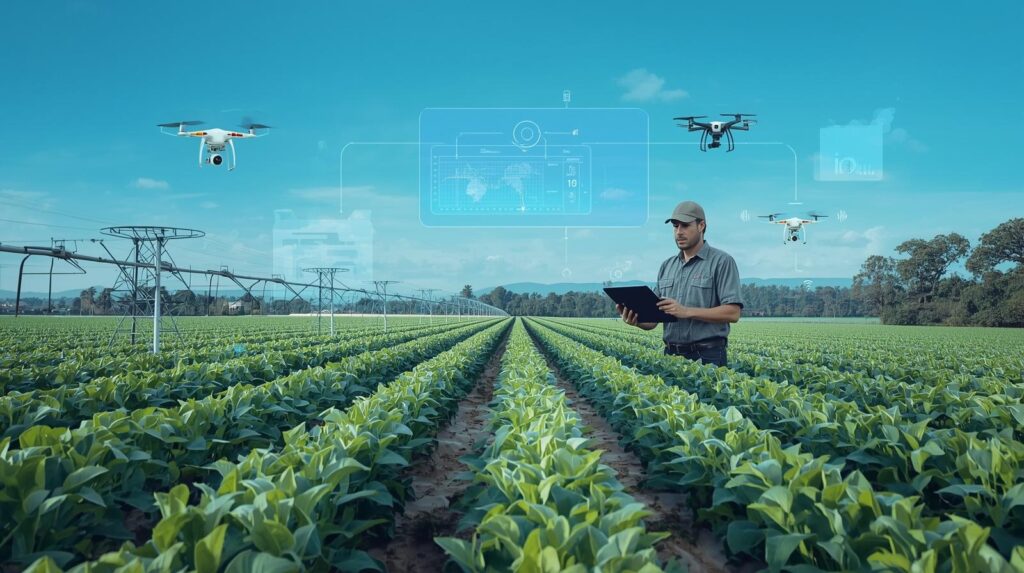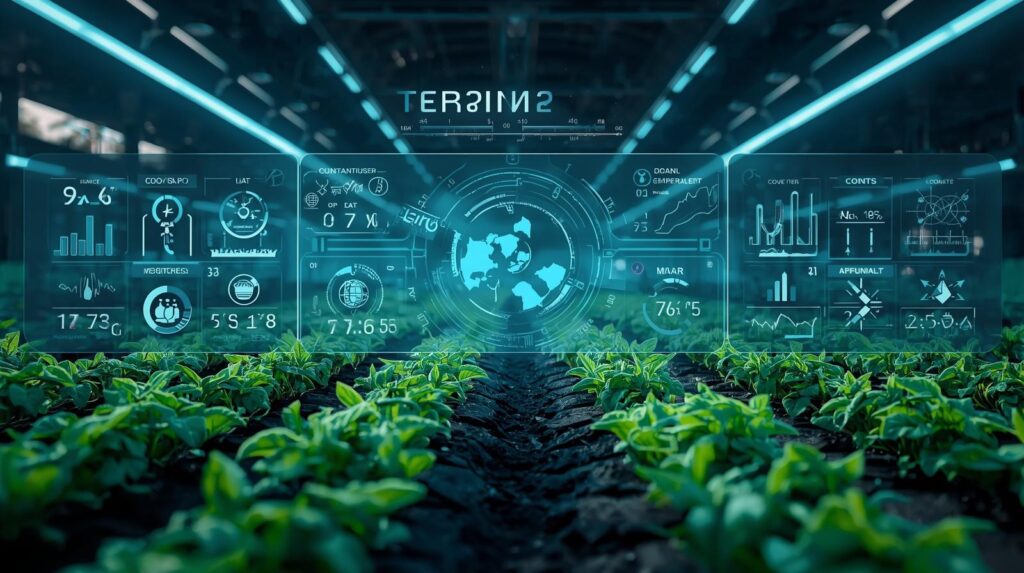The global agricultural sector stands at the precipice of a revolution. Faced with a burgeoning population, climate change, and finite natural resources, the imperative to produce more food with greater efficiency has never been more critical. Enter the powerful convergence of two technological titans: the Internet of Things (IoT) and Artificial Intelligence (AI). While Agriculture IoT has been steadily planting the seeds of data-driven farming through sensors and connectivity, it is the profound AI impact on the Agriculture IoT Market that is now harvesting unprecedented value, transforming traditional practices into a paradigm of intelligent precision. This synergy is not merely an incremental improvement; it is a fundamental rewrite of the agricultural playbook, creating a smarter, more resilient, and sustainable future for farming.
The global Agriculture IoT Market size was estimated at USD 8.50 billion in 2024 and is predicted to increase from USD 8.86 billion in 2025 to approximately USD 12.61 billion in 2030, expanding at a CAGR of 7.3% from 2025 to 2030.

From Data Collection to Intelligent Action: The Core Synergy
The Agriculture IoT market, on its own, provides the essential nervous system for the modern farm. A network of interconnected devices—soil moisture sensors, drone-based multispectral cameras, GPS-guided tractors, and weather stations—continuously generates a colossal stream of data. This data encompasses everything from micro-climate conditions and soil health to crop vitality and equipment performance. However, raw data, in its voluminous and complex state, is often overwhelming. This is where AI emerges as the central brain. Artificial Intelligence, particularly machine learning (ML) and deep learning algorithms, processes this immense dataset, identifies patterns invisible to the human eye, and generates predictive insights and automated responses. The true AI impact on the Agriculture IoT Market is this critical evolution from simple data collection to intelligent, actionable decision-making, enabling farmers to move from reactive practices to proactive and predictive management.
Precision Farming Reimagined: The AI-Driven Approach
The most significant manifestation of AI’s influence is in the elevation of precision farming. AI algorithms analyze data from IoT sensors to deliver hyper-localized instructions, ensuring that resources are applied not just to a field, but to specific square meters within it.
- Precision Irrigation: AI systems process data from soil moisture probes, evapotranspiration rates, and weather forecasts to determine the exact water needs of each crop zone. They can then automatically control irrigation systems, reducing water usage by up to 30% while preventing over-watering that can lead to disease and nutrient leaching.
- Targeted Fertilization and Pest Control: By analyzing drone and satellite imagery, AI can identify nutrient deficiencies or early signs of pest infestation long before they become visible to a farmer. This allows for the precise application of fertilizers or pesticides only where needed, slashing chemical use, lowering costs, and minimizing environmental runoff.
Predictive Analytics: Seeing the Future of the Field
Perhaps the most powerful aspect of AI is its predictive capability. Machine learning models are trained on historical data, current conditions, and external factors to forecast future events with remarkable accuracy. This predictive power is a game-changer for yield optimization and risk management. Algorithms can predict crop yields well before harvest, allowing for better supply chain planning, logistics, and market negotiations. Furthermore, AI can forecast the outbreak of diseases or the arrival of pest swarms based on weather patterns and historical incidence data, giving farmers a crucial window to implement preventative measures. This foresight protects harvests and ensures greater income stability, de-risking the inherently unpredictable nature of farming.

Autonomous Machinery and Robotics
The AI impact on the Agriculture IoT Market is physically embodied in the rise of smart, autonomous machinery. AI is the intelligence behind self-driving tractors that can plow, plant, and harvest with sub-inch precision, operating 24/7 and addressing labor shortages. Weeding robots, powered by computer vision, can distinguish between a crop and a weed, eliminating the latter with a laser or mechanical tool, thereby enabling organic farming at scale. Harvesting robots are being trained to identify ripe fruits and vegetables and pick them with care that matches or exceeds human pickers, reducing spoilage and labor costs.
Livestock Monitoring and Management
The revolution extends beyond crops into livestock farming. IoT sensors in the form of smart tags and wearables monitor vitals such as body temperature, heart rate, and activity levels of individual animals. AI analyzes this continuous stream of data to identify early signs of illness, such as lameness or infection, enabling early treatment and improving animal welfare. It can also precisely predict optimal breeding times and detect calving or birthing events, alerting farmers to provide necessary assistance. This proactive approach improves herd health, boosts productivity, and enhances farm profitability.
Optimizing the Agricultural Supply Chain
AI’s influence permeates the entire post-harvest journey, reducing waste and enhancing efficiency. Smart IoT sensors monitor the condition of produce during storage and transportation, tracking temperature, humidity, and ethylene gas levels. AI algorithms can predict the remaining shelf-life of produce in real-time, allowing logistics companies to dynamically reroute shipments to closer destinations if delays occur. This drastically reduces the estimated $1 trillion worth of food lost annually in the supply chain, ensuring more produce reaches consumers’ plates in perfect condition.
Challenges and Market Considerations
Despite its immense potential, the integration of AI into Agriculture IoT is not without challenges. The high initial investment cost for technology can be a barrier for smallholder farmers. Issues of data privacy, ownership, and cybersecurity in a connected farm ecosystem are paramount. Furthermore, the effectiveness of AI models depends on the quality and quantity of data, and a lack of digital infrastructure in rural areas can hinder deployment. There is also a significant need for training and digital literacy among farmers to build trust and ensure they can effectively leverage these advanced tools.
The Future Harvest: Trends Shaping the Market
The future of the AI impact on the Agriculture IoT Market is bright and evolving rapidly. We are moving towards the development of generative AI models that can simulate countless farming scenarios based on climate projections, helping farmers choose the most resilient crops and practices. AI-powered digital twins—virtual replicas of entire farms—will allow for real-time simulation and optimization without any real-world risk. Furthermore, the integration of blockchain with AI and IoT will create unprecedented transparency and traceability from farm to fork, allowing consumers to verify the sustainability and origin of their food.
Download PDF Brochure @
https://www.marketsandmarkets.com/pdfdownloadNew.asp?id=199564903
A Sustainable and Bountiful Future
The symbiotic relationship between AI and Agriculture IoT is fundamentally reshaping one of humanity’s oldest industries. The powerful AI impact on the Agriculture IoT Market is delivering tangible benefits: dramatically increased efficiency, maximized yields, enhanced sustainability, and improved resilience against climate volatility. By transforming data into intelligent action, AI is empowering farmers to become true decision-scientists, managing their land and livestock with a precision once unimaginable. As technology continues to advance and become more accessible, this fusion of bits and bytes with soil and seeds promises to cultivate a future where we can feed the world sustainably, efficiently, and intelligently.
Explore In-Depth Semiconductor & Electronics Market Research:
https://www.marketsandmarkets.com/semiconductorand-electonics-market-research-87.html
FAQs
1. How does AI specifically improve crop yields in agriculture?
AI analyzes data from IoT sensors (soil, weather, drones) to provide precise instructions on watering, fertilizing, and pest control. This ensures optimal growing conditions for every plant, maximizing health and output while minimizing resource waste.
2. What is a real-world example of AI and IoT working together on a farm?
A common example is an automated irrigation system. IoT soil moisture sensors collect data, which an AI algorithm analyzes alongside weather forecasts. The AI then decides exactly when and how much to water, automatically activating the irrigation system only in areas that need it.
3. Is AI in agriculture only beneficial for large-scale corporate farms?
While large farms were early adopters, the technology is rapidly becoming more scalable and affordable. SaaS (Software as a Service) models and pay-per-use analytics are making AI-driven insights accessible to smaller and mid-sized farms, helping them compete.
4. Can AI help in making agriculture more environmentally sustainable?
Absolutely. AI is a key driver of sustainable agtech. By enabling precision application of water, fertilizers, and pesticides, it significantly reduces runoff and chemical usage, conserves water, and promotes healthier soil—all of which lessen agriculture’s environmental footprint.
5. What skills do farmers need to adopt AI and IoT technology?
The transition requires a blend of traditional farming knowledge with new digital skills. Farmers need to become comfortable with data interpretation, using software platforms, and managing connected devices. However, tech companies are increasingly focusing on creating user-friendly, intuitive interfaces that require minimal technical expertise.
See The Latest Semiconductor Reports:
Radiation Hardened Electronics Market Size, Share & Trends : https://www.marketsandmarkets.com/Market-Reports/radiation-hardened-electronics-market-44047967.html
Smart Appliances Market Size, Share & Trends : https://www.marketsandmarkets.com/Market-Reports/smart-appliances-market-8228252.html
Ultra-low-power Microcontroller Market Size, Share & Trends : https://www.marketsandmarkets.com/Market-Reports/ultra-low-power-microcontroller-market-206772623.html
Quantum Computing Market Size, Share & Trends : https://www.marketsandmarkets.com/Market-Reports/quantum-computing-market-144888301.html
Cold Chain Monitoring Market Size, Share & Trends : https://www.marketsandmarkets.com/Market-Reports/cold-chain-monitoring-market-161738480.html
Printed Electronics Market Size, Share & Trends : https://www.marketsandmarkets.com/Market-Reports/printed-electronics-market-197.html